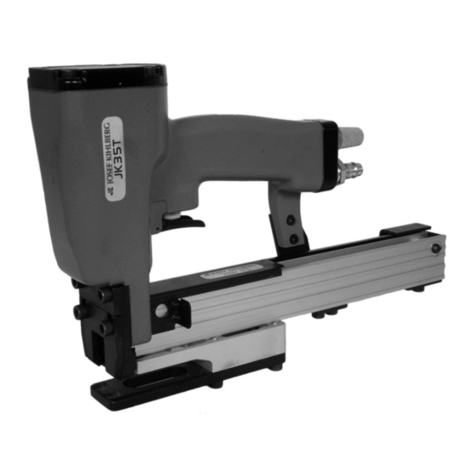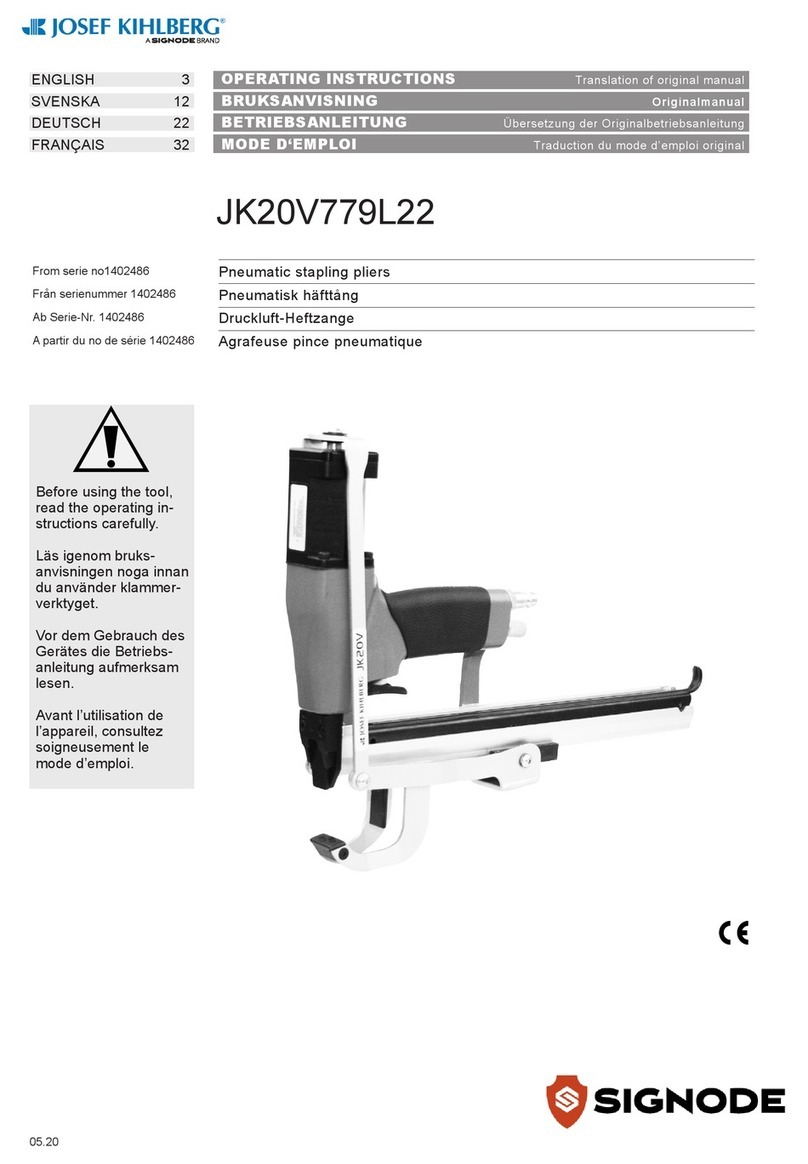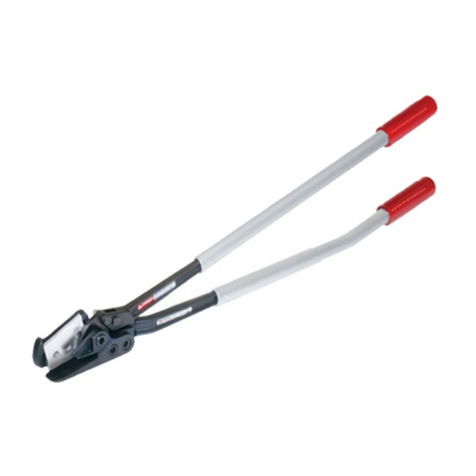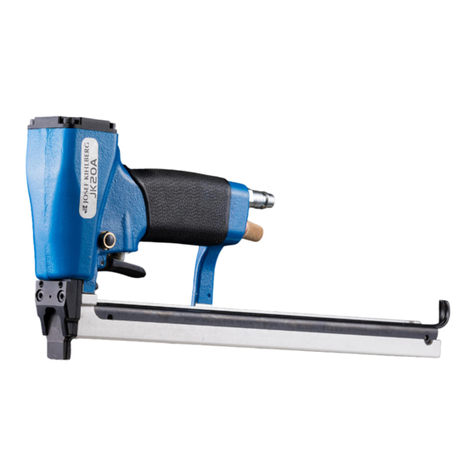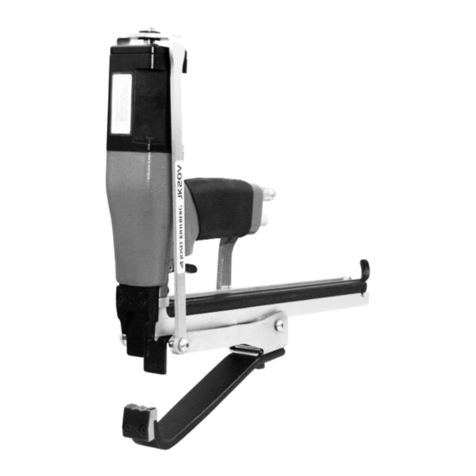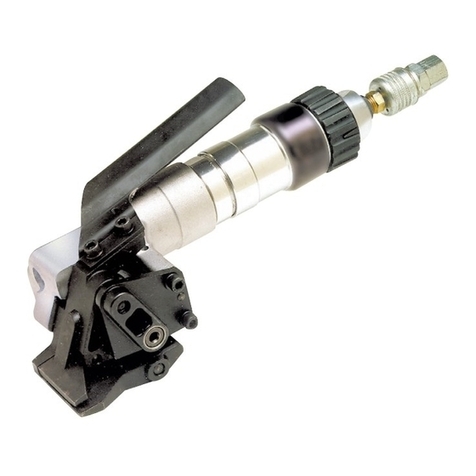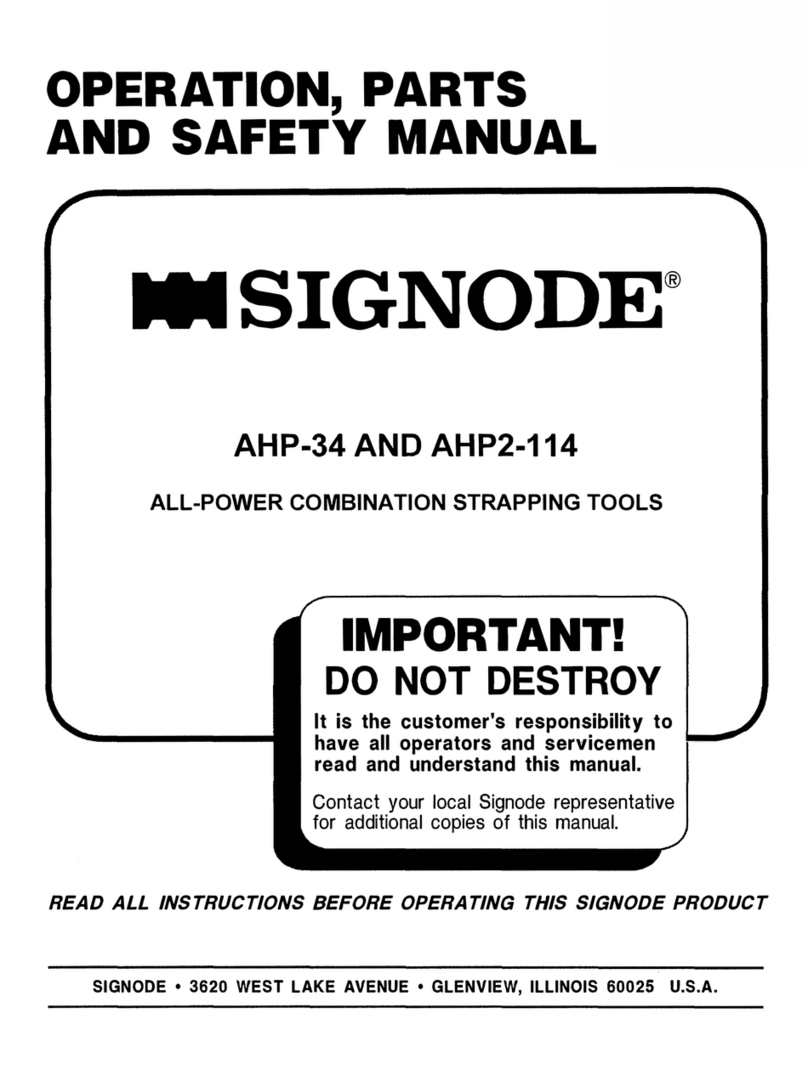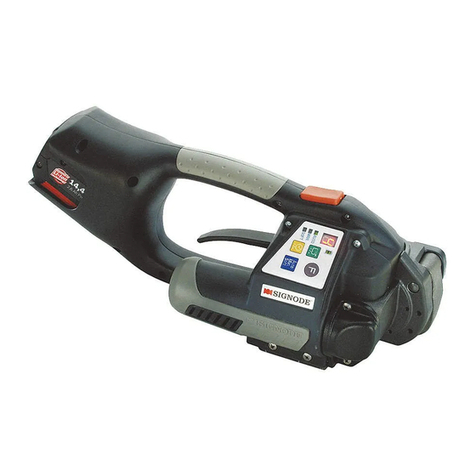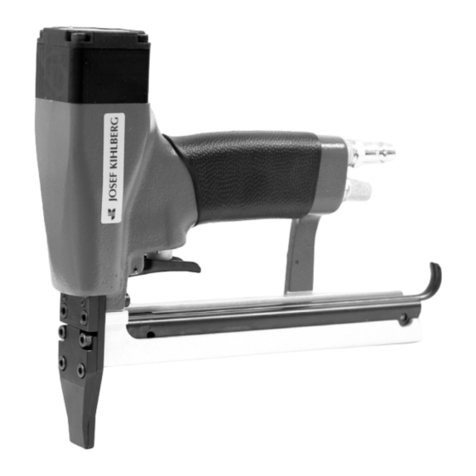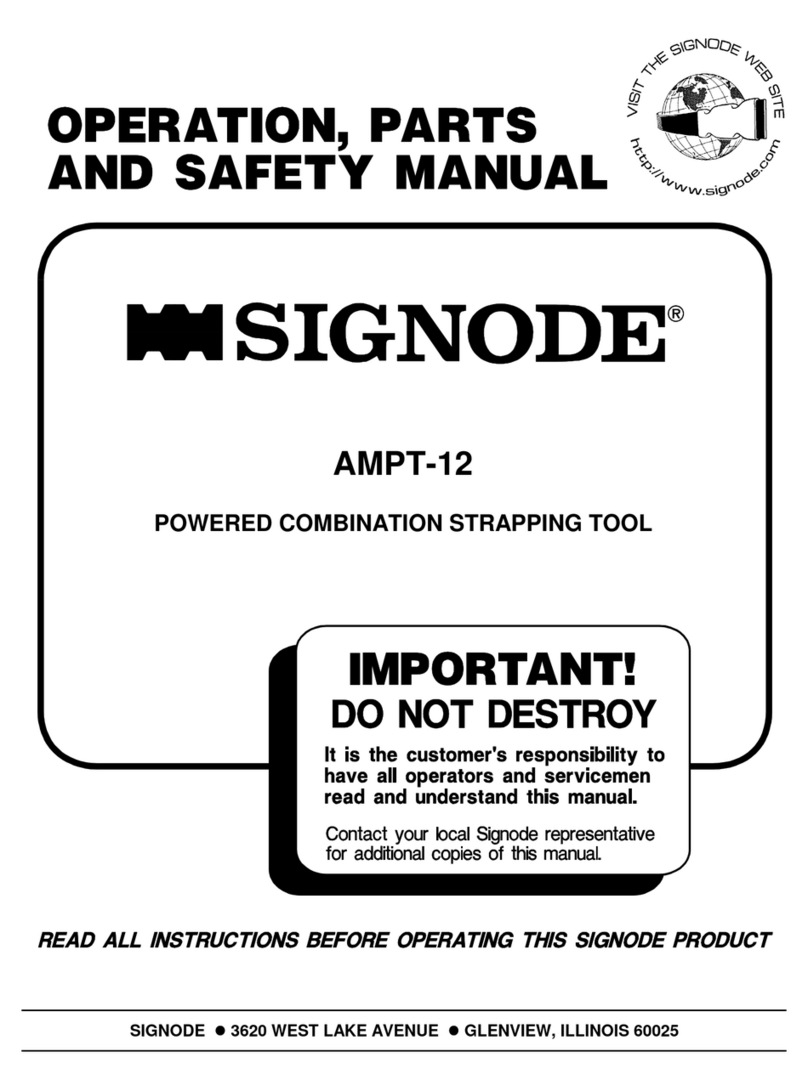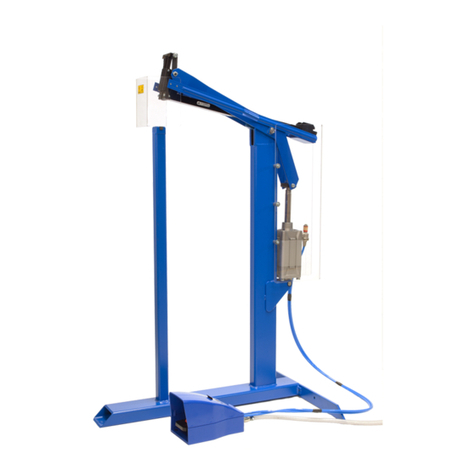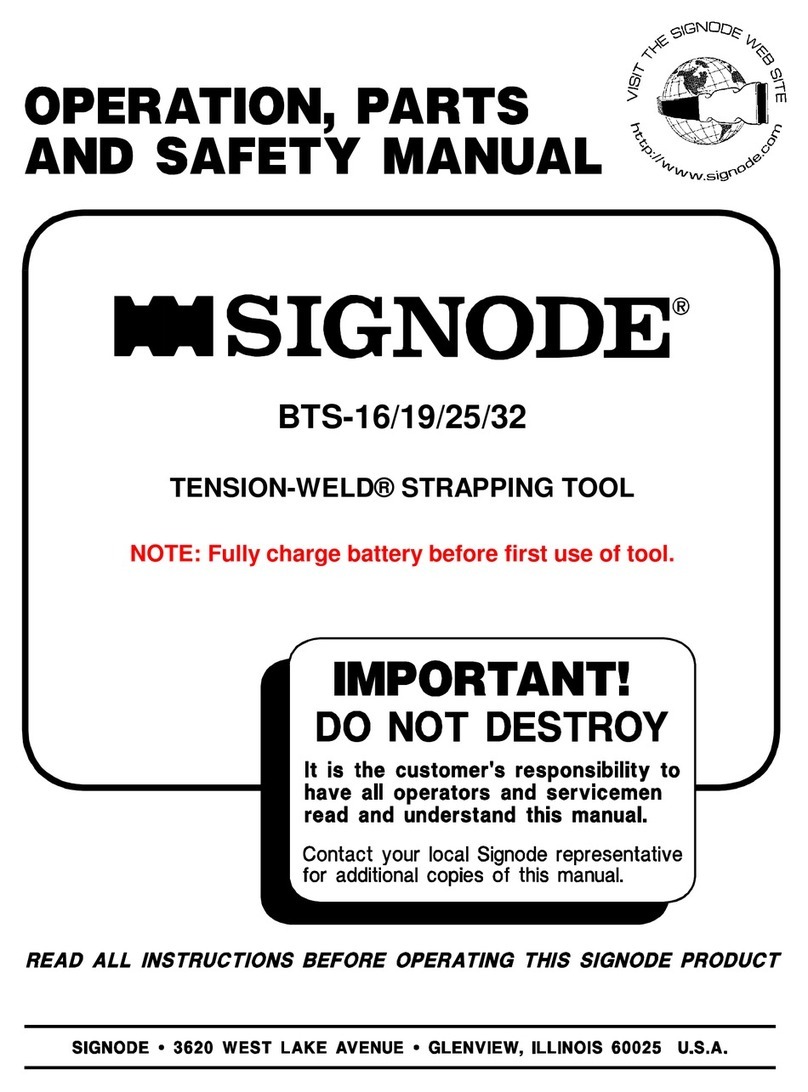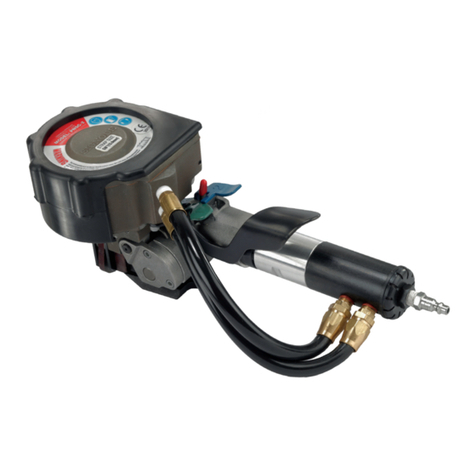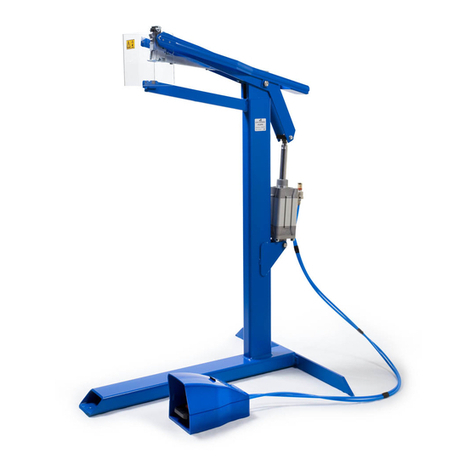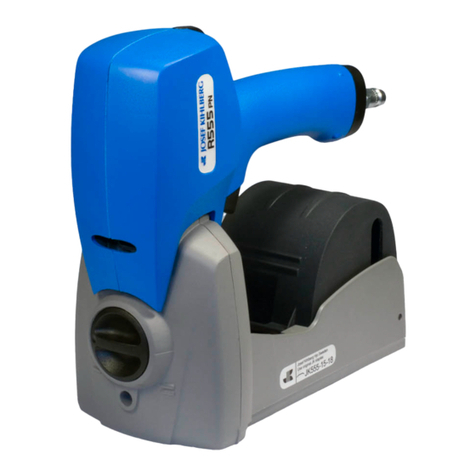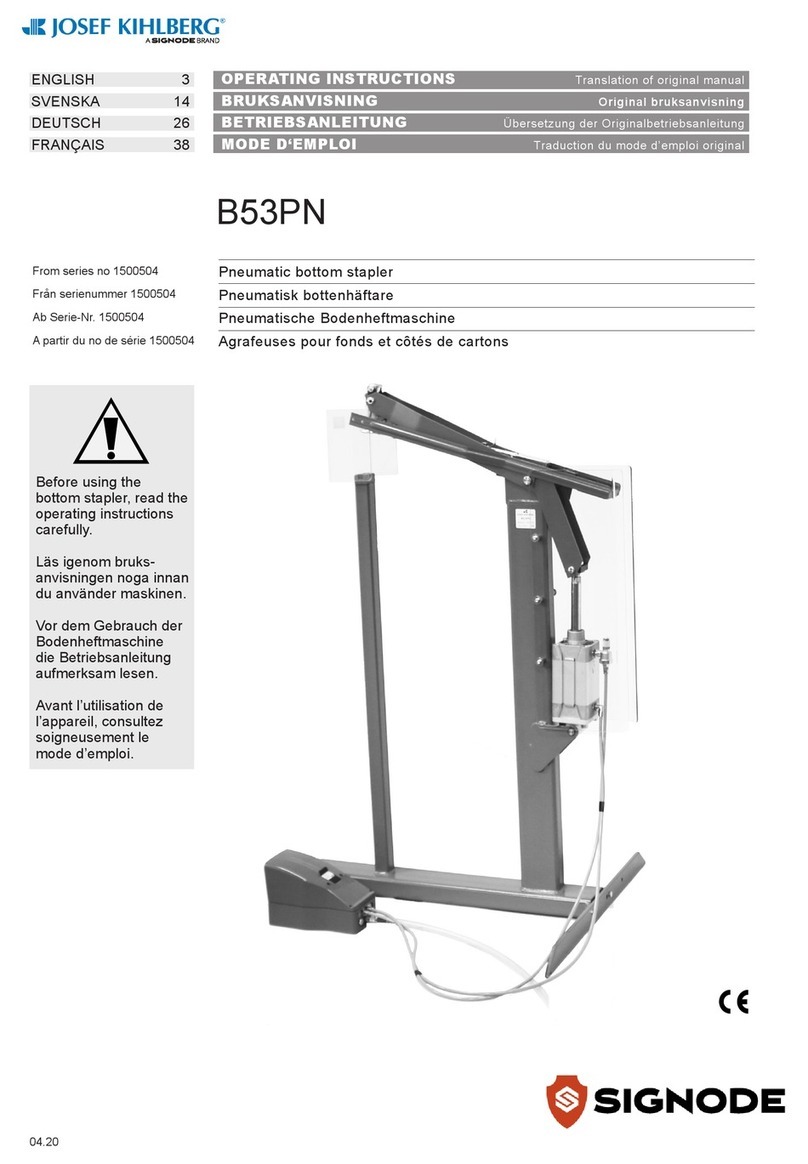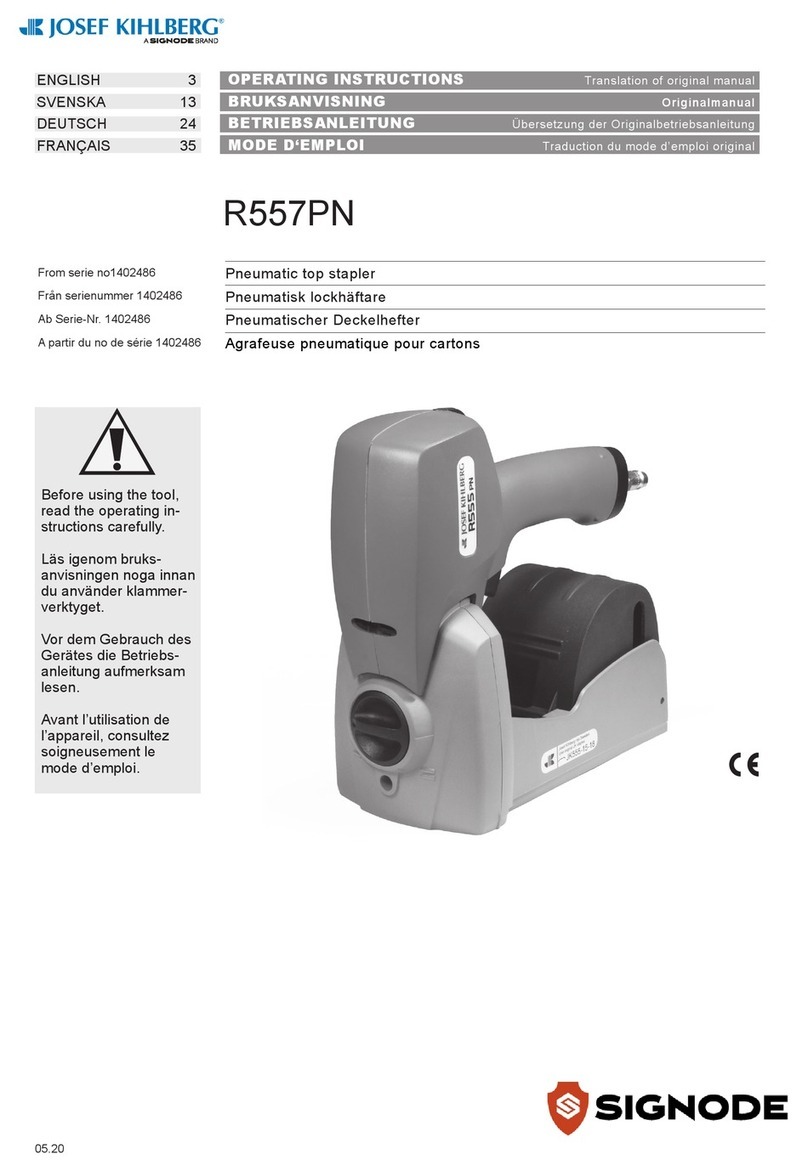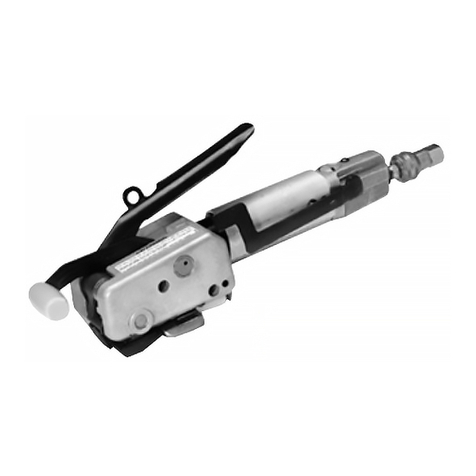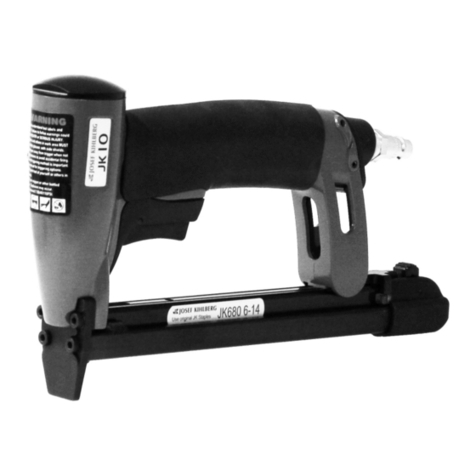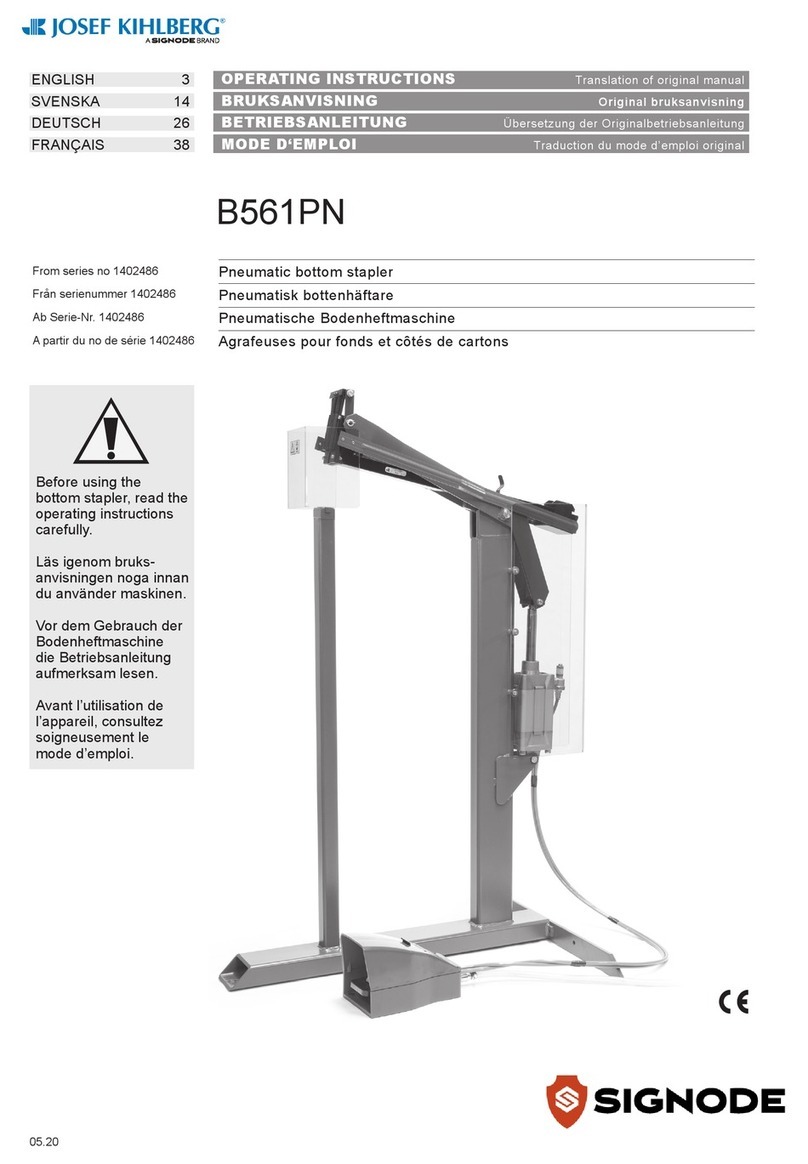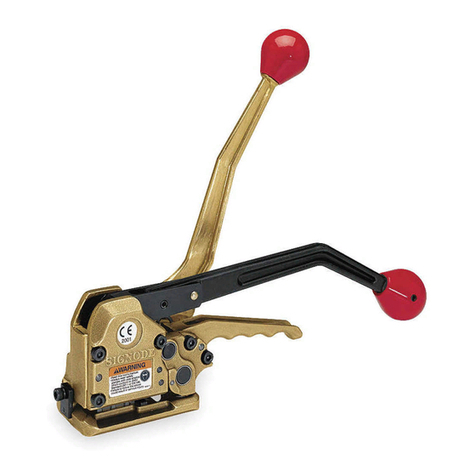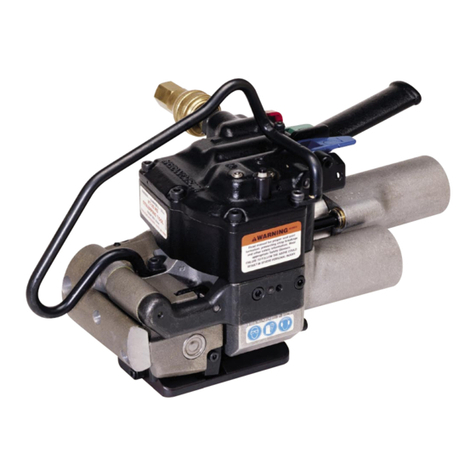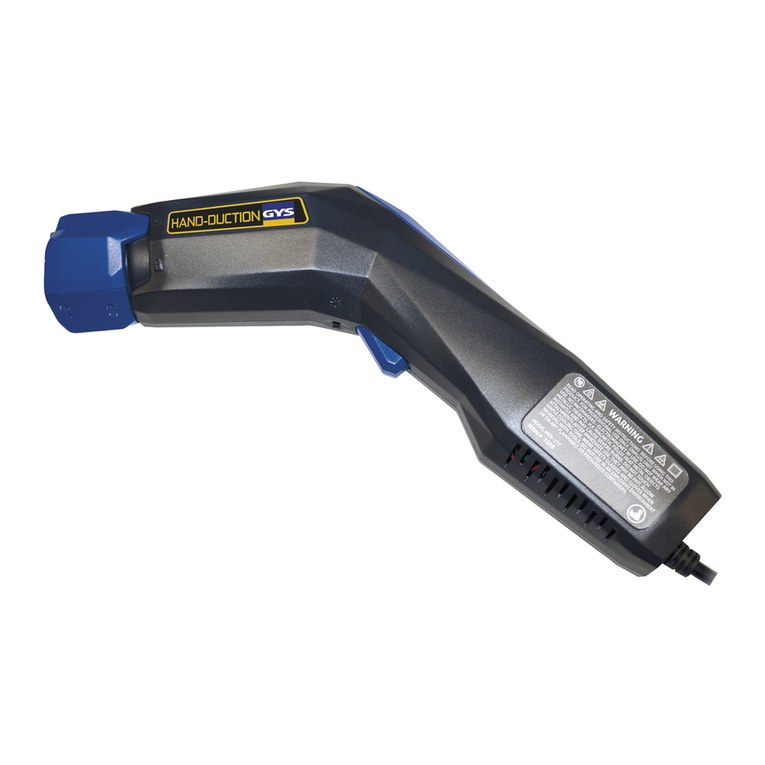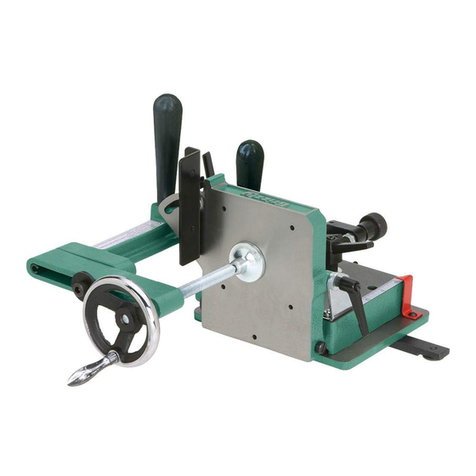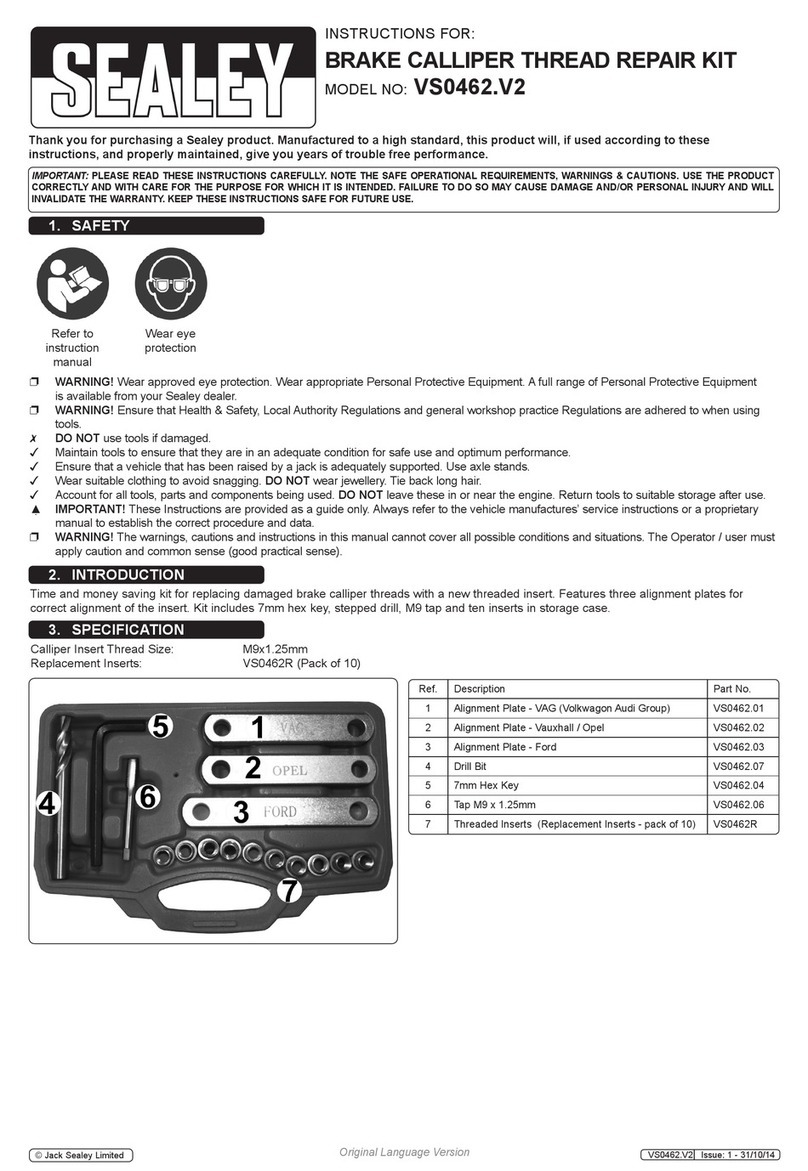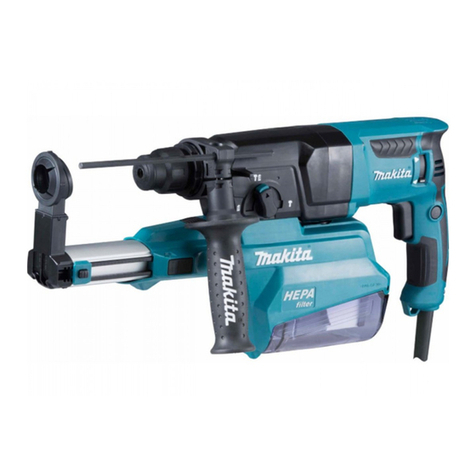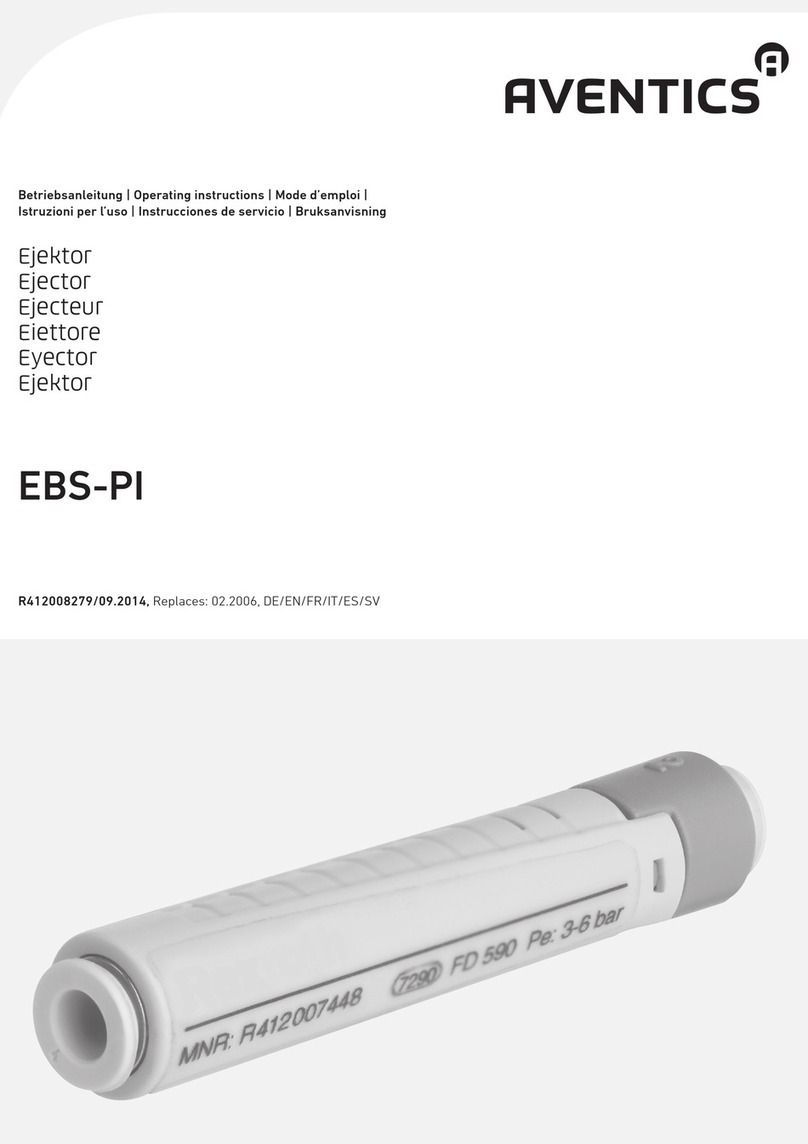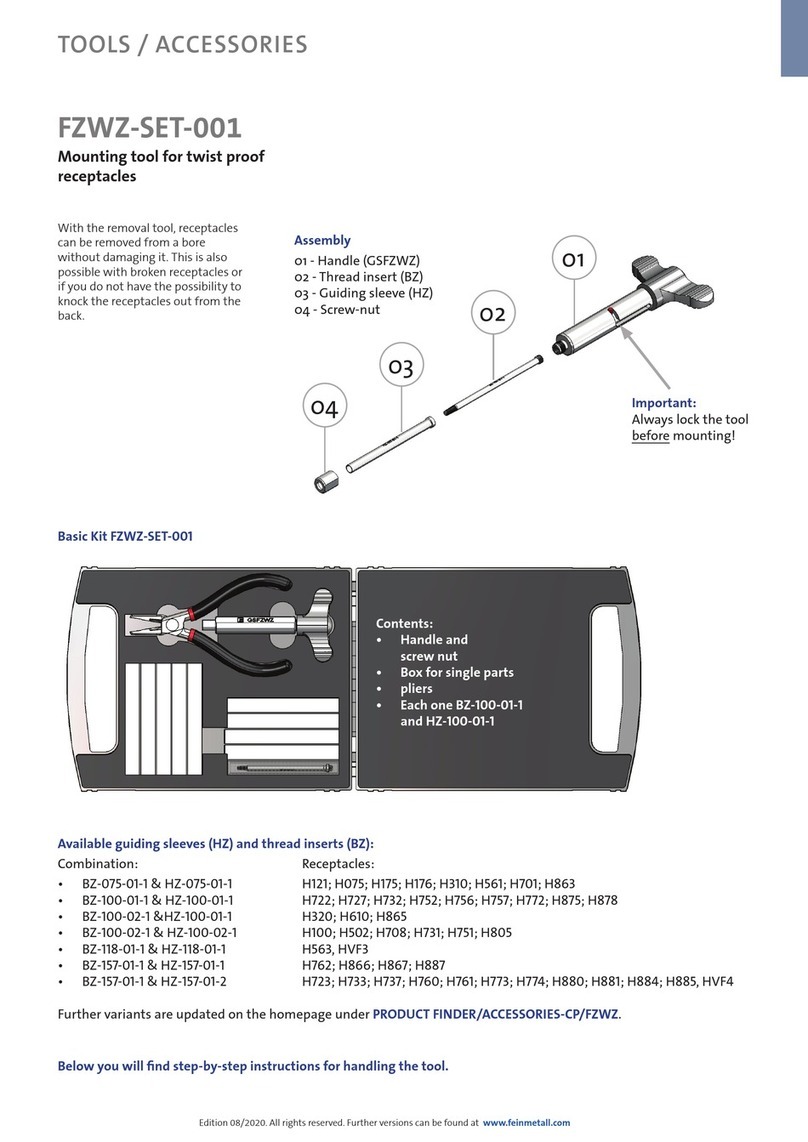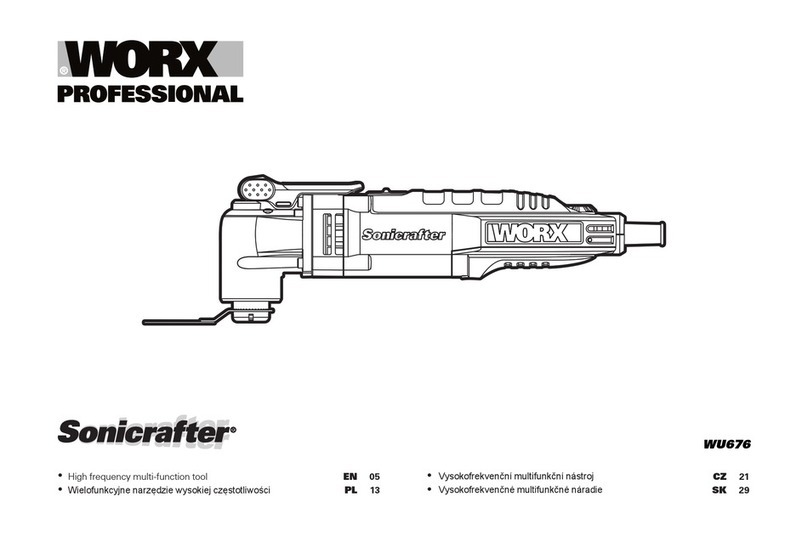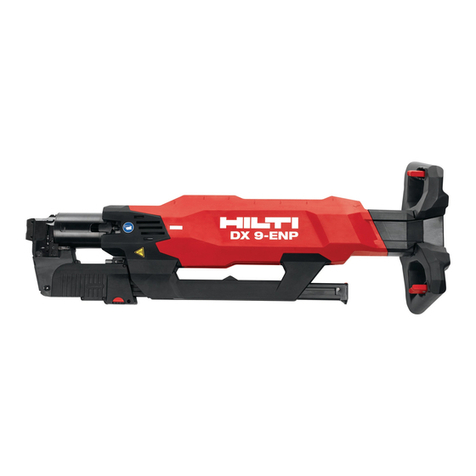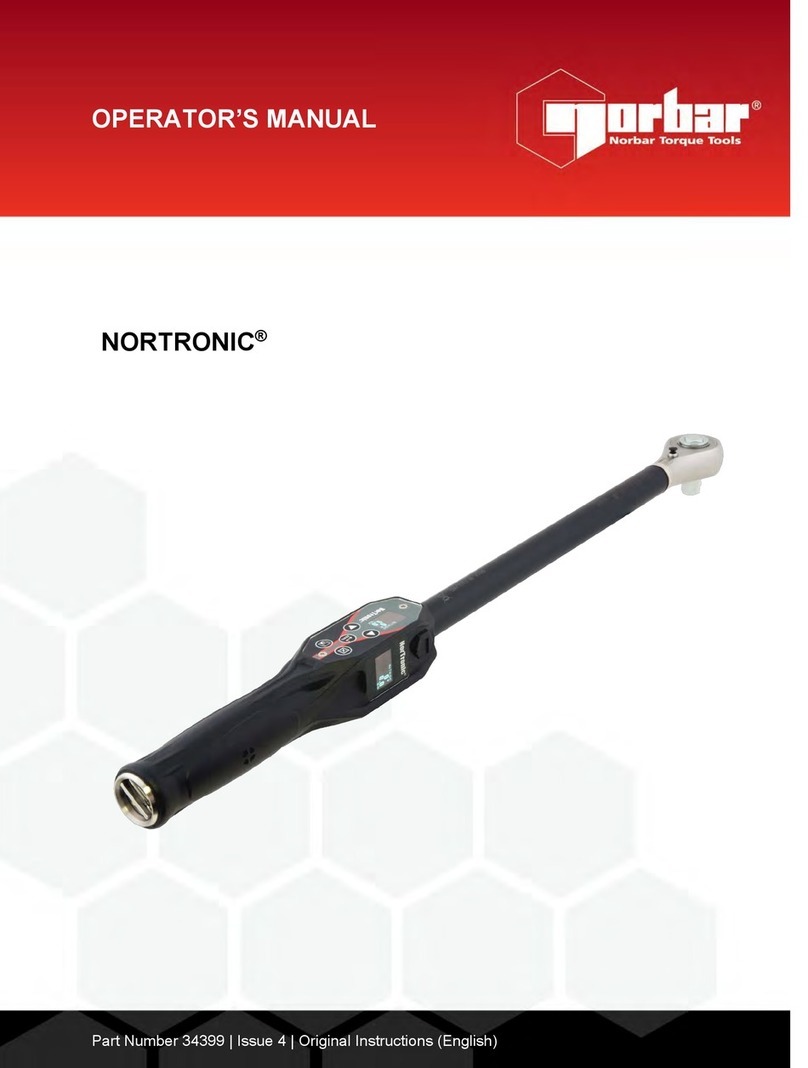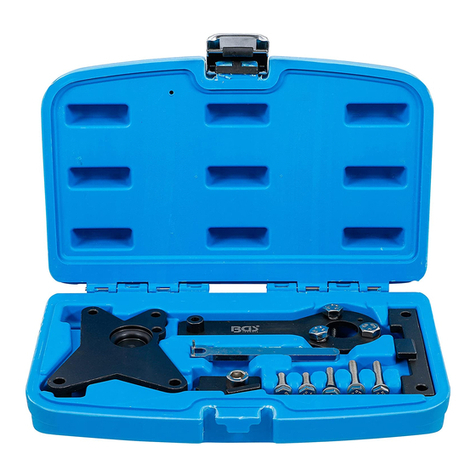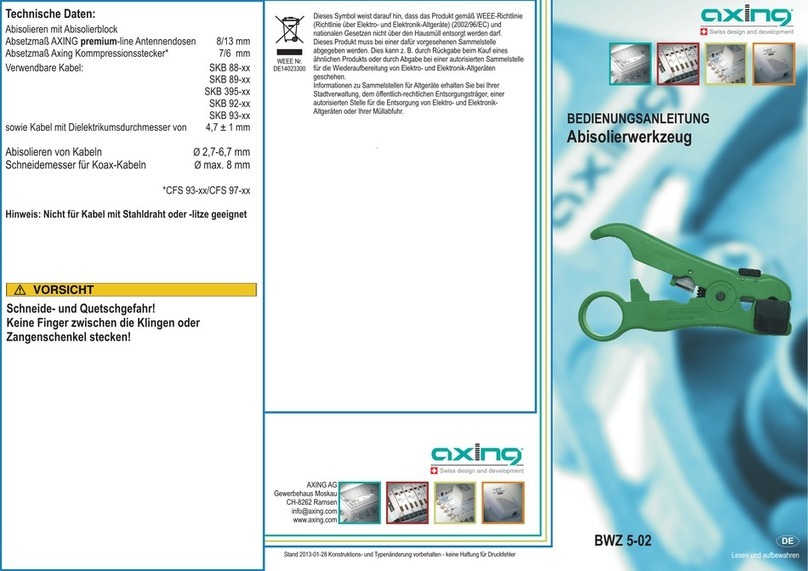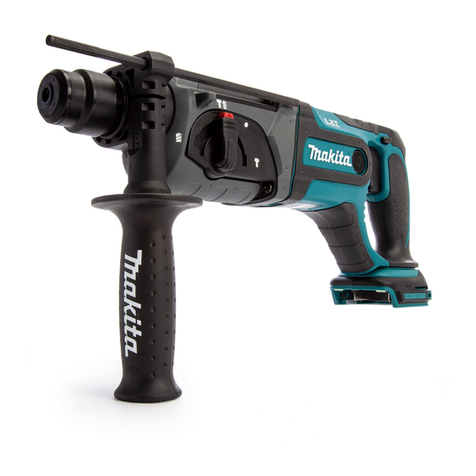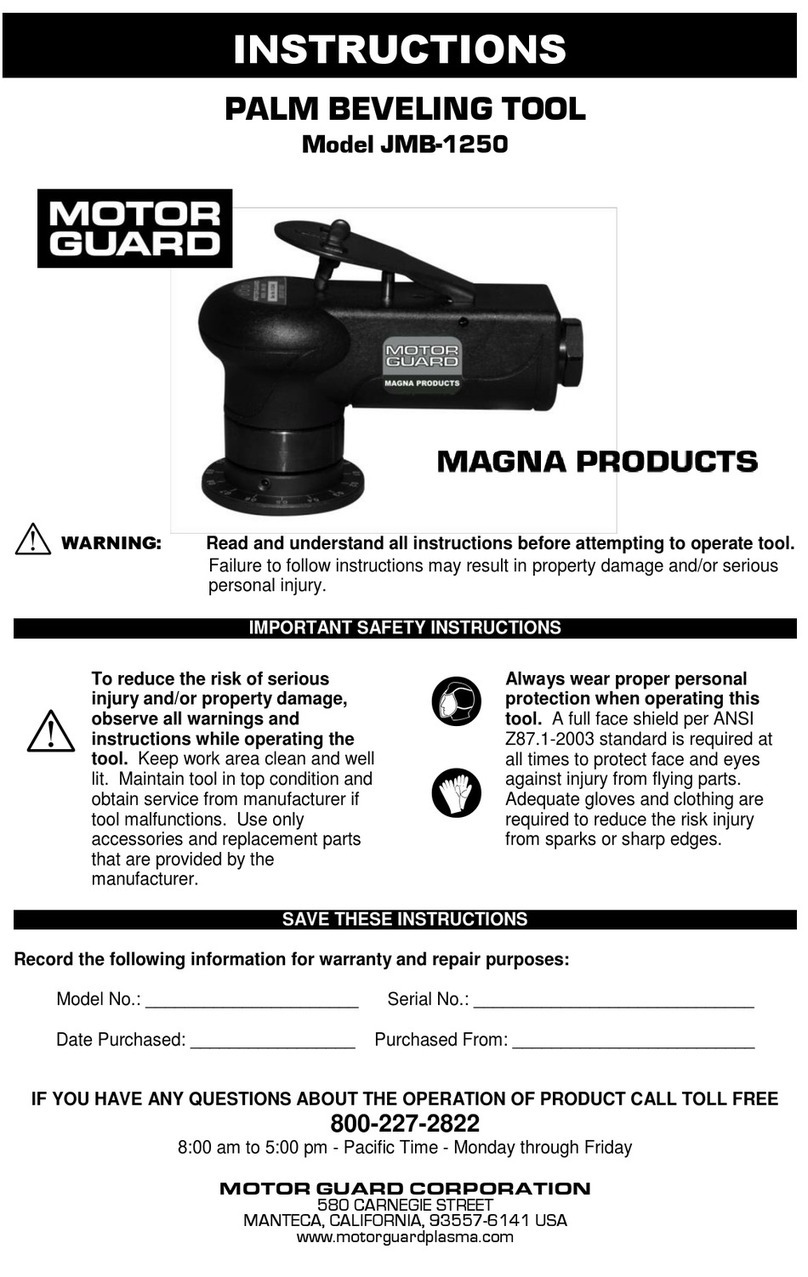
7
If these precautions are taken and water is still present, an after cooler and a moisture separator
are required between the compressor and the air receiver tank. A large air line separator can be
installed in the air tool line, but precautions must be taken to insure that it will be drained daily,
before the air tool is operated.
Water in air lines is a constant threat to the proper operation of air tools. Even near
freezing operating conditions, a good refrigerant type dryer is essential. A good dryer will
remove 95% or more of water right at the compressor. The remaining moisture is removed at the
water leg in the piping system or in the filter, Signode Part No. 173111. Additional information is
available in the Signode publication, "Air Supply Manual" p. 25, E-186038. If you have any
questions, contact your local Signode Representative.
LUBRICATION
The air motor must be properly lubricated. This is achieved by keeping the air line lubricator
filled with oil and correctly adjusted. Without proper lubrication, the motor will become sticky
and the tool will give low and erratic tension.
Install the lubricator as close to the air tool as possible. The arrow on the lubricator's top
surface must point in the direction of air flow.
For proper operation, oil must drop through the lubricator sight glass at a rate of 4 to 10 drops
per minute. This rate is to be checked while the air tool is running free. Only 20% of this oil is
actually delivered to the tool. The remaining oil drops back into the oil reservoir. The unit is
factory set and should require no adjustment. If an adjustment is required, the adjusting screw
on top of the lubricator may be turned as marked to reduce or increase the flow of oil.
The correct grade of oil must be used in the lubricator; too heavy an oil will not provide sufficient
lubrication and will cause sticking and sluggish operation of the air tool. Recommended oils are
any good grade of rust and oxidation inhibiting oil with a viscosity of 80-120 S.U.S. at 100
degrees Fahrenheit. (0.15 to 0.25 cm2/sec. at 38 degrees Celsius), such as:
Non Fluid Oil Co., grade #LS-1236
Signode oil - Part No. 008556
If necessary, use SAE #5 or SAE #10, non-detergent, cut 1:1 with kerosene. Some oils contain
anti-wear additives which may disable the air motor. Be certain to use recommended oil.
Several drops of lubricator oil added to the inlet of the air motor or into the air line each day will
help insure good operation. A noticeable reduction of air motor performance can usually be
corrected by squirting a few drops of oil into the air line.
AIR CONSUMPTION
Air consumption in cubic feet per minute
(cfm) for the PRHM-34 can be calculated as
follows: cfm = (a)x(b)x(0.23)
a = Number of straps applied per minute.
b = Number of seconds air motor is on
per strap during tensioning, from
start to deceleration to stall.
0.23 = PRHM-34 efficiency ratio.
Example calculation:
Peak strapping load is 4 straps/minute, so
a = 4. Air motor is on 5 seconds/strap, so
b = 5. PRHM-34 efficiency ratio is 0.23.
(a)x(b)x(0.23)=4x5x0.23=4.6 cubic ft/min.
4x5x0.39=7.8 cubic meters/hr. (7.8M3/hr.)
Air pressure is assumed to be 90 psig (6.2 bar) with the recommended size and length of air
hose. Volume of air at room temperature and sea level pressure, or so-called `free air'
conditions. For more detailed information about air supply systems, refer to Signode manual
Part No. 186038.
